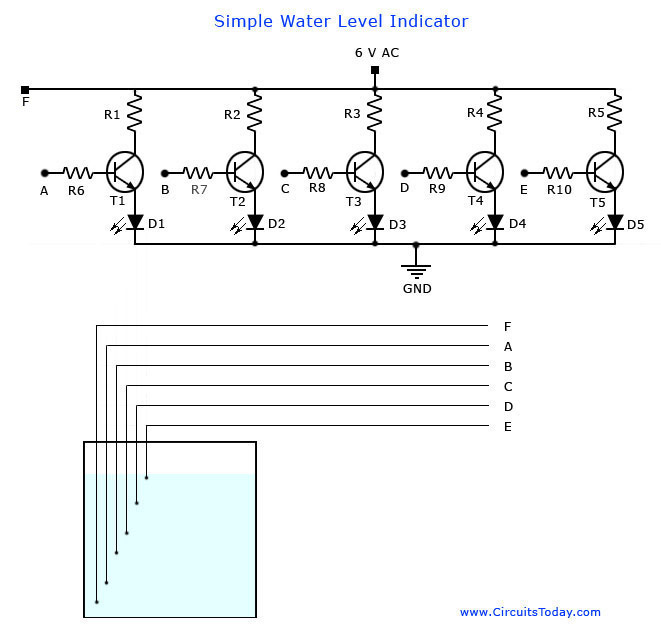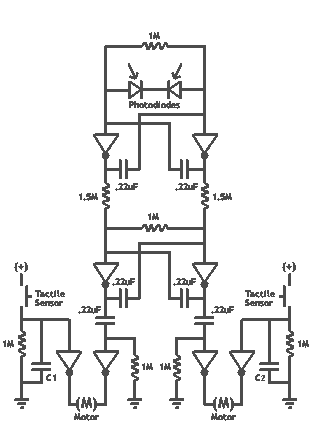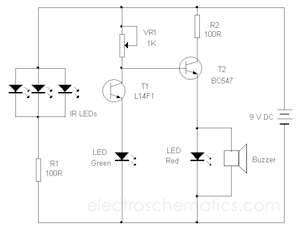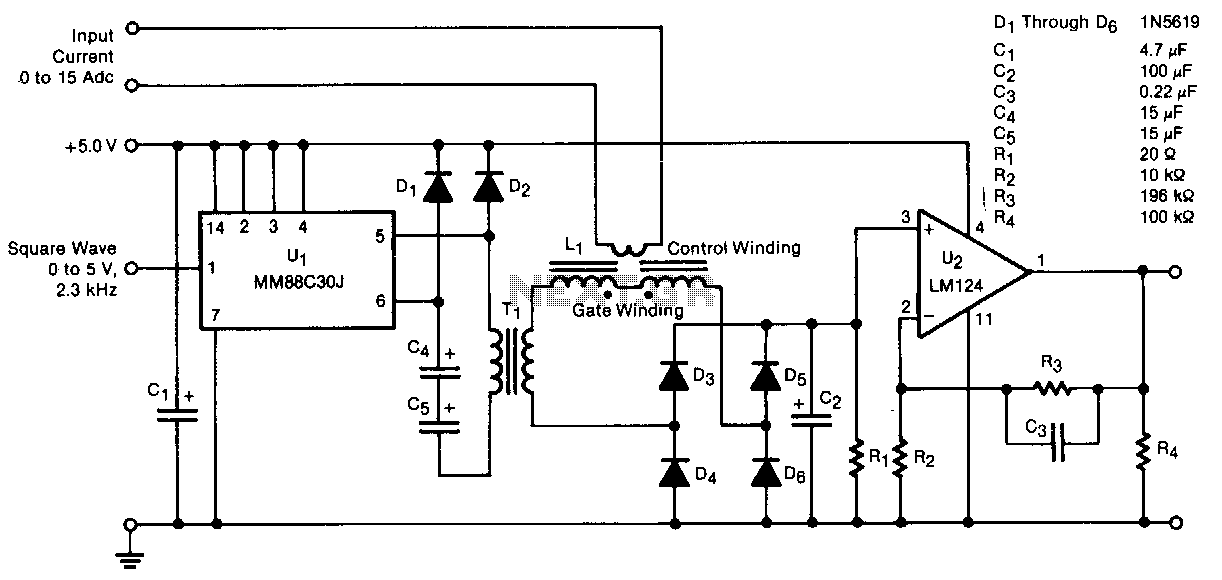
Water Level Indicator Circuit-Liquid Level Sensor Project

A simple water level indicator project with a circuit diagram for home and industry. This water tank level sensor can be utilized for any liquid level indicator projects.
The water level indicator circuit is designed to monitor and display the level of liquid in a tank, providing a simple yet effective solution for both residential and industrial applications. The primary components of this circuit typically include a microcontroller or a comparator IC, a series of probes or electrodes that serve as level sensors, and visual indicators such as LEDs or an LCD display.
The circuit operates by utilizing conductive probes placed at different heights within the tank. These probes are connected to the input pins of the microcontroller or comparator. When the liquid level rises to a specific probe, it completes an electrical circuit, signaling the microcontroller to activate a corresponding output. For instance, if the water level reaches the lowest probe, a red LED may light up, indicating that the tank is nearly empty. Conversely, when the water level reaches the highest probe, a green LED could illuminate, signaling that the tank is full.
In addition to visual indicators, the circuit can be enhanced with an alarm system that activates when the water level falls below or rises above predetermined thresholds. This feature is particularly useful in industrial settings where maintaining specific liquid levels is critical for operational safety and efficiency.
The schematic of the water level indicator typically includes a power supply section to provide the necessary voltage to the components, a microcontroller or comparator section to process the input from the probes, and output drivers to control the visual indicators and alarm system. Proper placement of the probes is crucial to ensure accurate readings, and the circuit can be easily adapted for various tank sizes and types of liquids.
Overall, this water level indicator project exemplifies a practical application of electronics in everyday life, offering a reliable solution for monitoring liquid levels in tanks across various environments.A simple Water level indicator project with circuit diagram for home and industry.This water tank level sensor can be used for any liquid level indicator projects.. 🔗 External reference
The water level indicator circuit is designed to monitor and display the level of liquid in a tank, providing a simple yet effective solution for both residential and industrial applications. The primary components of this circuit typically include a microcontroller or a comparator IC, a series of probes or electrodes that serve as level sensors, and visual indicators such as LEDs or an LCD display.
The circuit operates by utilizing conductive probes placed at different heights within the tank. These probes are connected to the input pins of the microcontroller or comparator. When the liquid level rises to a specific probe, it completes an electrical circuit, signaling the microcontroller to activate a corresponding output. For instance, if the water level reaches the lowest probe, a red LED may light up, indicating that the tank is nearly empty. Conversely, when the water level reaches the highest probe, a green LED could illuminate, signaling that the tank is full.
In addition to visual indicators, the circuit can be enhanced with an alarm system that activates when the water level falls below or rises above predetermined thresholds. This feature is particularly useful in industrial settings where maintaining specific liquid levels is critical for operational safety and efficiency.
The schematic of the water level indicator typically includes a power supply section to provide the necessary voltage to the components, a microcontroller or comparator section to process the input from the probes, and output drivers to control the visual indicators and alarm system. Proper placement of the probes is crucial to ensure accurate readings, and the circuit can be easily adapted for various tank sizes and types of liquids.
Overall, this water level indicator project exemplifies a practical application of electronics in everyday life, offering a reliable solution for monitoring liquid levels in tanks across various environments.A simple Water level indicator project with circuit diagram for home and industry.This water tank level sensor can be used for any liquid level indicator projects.. 🔗 External reference





